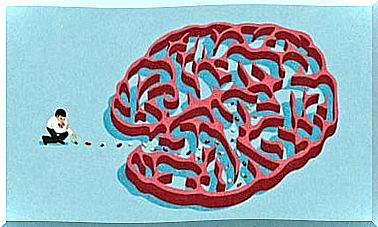Cialdini’s Persuasion Techniques

Persuasion is the social influence of beliefs, attitudes, intentions, motivations and behaviors It is a form of manipulation that is based on commitment and serves to change thoughts and behaviors. Persuasion techniques use words to influence other people and achieve desired changes.
Among the scholars of persuasion, Robert B. Cialdini stands out, an American psychologist who integrated the different persuasion techniques into six fundamental principles. To do so, Cialdini worked as a used car salesman, in charities, marketing firms, and the like.
While working he used his knowledge in psychology and put it to use to test its effectiveness while conducting covert experiments. Below you can see each of the six principles on which his persuasion techniques are based.
Commitment and consistency
The influence of the principle of coherence is based on the desire to be and appear to be a person with consistent attitudes and behaviors over time. According to this principle, people will be more willing to accept a requirement if it corresponds to their commitments. Some of the best known techniques within this principle are the “foot in the door” and the “low ball”.

The foot-in-the-door technique consists of asking the person from whom we want to achieve something a small compromise, not very expensive so that we are not denied, that is related to our objective. Once that request has been accepted, you are asked for a commitment of greater importance, which is the one you really wanted to achieve. If the person refused that second request, it would seem inconsistent.
The low ball technique is so called because once an agreement has been established on some bases or conditions, the bases on which said agreement has been made are removed, placing worse ones. But since they had already accepted, people tend to accept the second conditions. This is one of the most effective persuasion techniques.
Reciprocity
Normally, people have a need to return favors. Reciprocity refers to the need in social relationships to restore balance. That is, when we receive anything, we feel the need to return something in return. If we want to get information from someone, the easiest thing is for us to previously make a personal confidentiality, small confession or some other information. This way you will feel obliged to tell us something in return.
People tend to treat others the same way they are treated, and this inertia shapes one of the most effective persuasion techniques. The application of this principle is simple and is verified, for example, in the delivery of an unexpected gift or exclusive discount. The influence of this psychological mechanism is greater the more the gift is perceived as something personal and dedicated. Give something so that the other person feels the need to give something back.
Social approval or consensus
People, in general, tend to believe that behavior that a large number of people are performing as valid. “If everyone does it for a reason, it will be, I will not be the only one who does not do it.” We all like to feel the acceptance of the group and we think that by acting as the rest do we reduce the risk of making mistakes. This principle is summed up in the popular saying “when you see your neighbor’s beard cut, put yours to soak”.
It is the psychological mechanism by which we tend to accommodate the majority opinion: we are more predisposed to accept something if others have already accepted it, and also to reject it if others have rejected it. Its application is very frequent: if we see that a product has obtained very positive comments, it is more likely that we will also buy it. In the same way, if we see that a brand has a lot of followers on social networks, it is more likely that we will follow it too.

Authority
According to the principle of authority, we are more predisposed to be influenced when we are challenged by an authority. This has nothing to do with coercion or the exercise of power, but with the aura of credibility and status that authority assumes. We tend to believe that those in leadership positions have more knowledge, more experience, or more voice.
In the principle of authority two elements come into play, hierarchy and symbols. The hierarchy is based on the belief that people who rise higher in the hierarchy have more knowledge and experience than the rest. For their part, symbols add credibility: the uniform of a policeman, the expensive suit of a banker, the gown of a doctor, the titles that an academic holds. An example is found when a celebrity recommends a product or defends an idea, even when what he promotes is not related to his activity (the actor who plays Dr. House advertising medical products).
Sympathy
By building a bond of sympathy and similarity it is easier to persuade. The principle of sympathy, also translated as hobby, liking or attraction points us to something that at first glance may seem simple: we are more predisposed to be influenced by people we like and less by people who cause us rejection.
Beauty, similarities, familiarity, and compliments and compliments are some of the factors that are used to cause sympathy and with which they are able to seduce us. The use of models and celebrities in advertising is based on the friendliness and familiarity they arouse. Also in politics, the idea that candidates are ordinary people concerned about the same problems that affect one is often reinforced.

Shortage
We have a tendency to believe that there are plenty of resources for everyone, but when a resource is presented as scarce, we will increase the value we attribute to it. The shortage may be limited by time or by accessibility. In short, the perception of scarcity generates demand.
This principle is used through offers for a certain time, such as sales or through the creation of limited editions. The more difficult it is for us to get things, the more value we will attribute to them. The same goes for prohibition. As soon as an object is banned, the effect is an immediate increase in public interest, such as drugs.
The persuasion techniques that we have seen are exploited by advertising and commercials to try to get what they want from us or the commitment that they will get it. Now that we know them, we will know how to identify them and control their influence.









